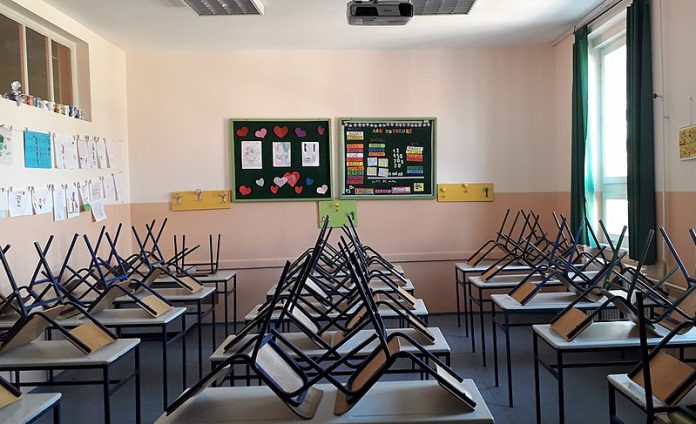Given its strategic location in the heart of Southeast Asia, Thailand is a popular regional transportation hub that welcomes millions of people each year. While Thailand managed to control the number of tourist-imported cases early in the year, a muay thai boxing match in early March resulted in the country’s first large-scale outbreak. On March 24, Thailand’s Prime Minister General Prayuth announced the Kingdom’s plans to combat the virus — an emergency decree accompanied by curfews, alcohol bans and recommended social distancing. Shortly after, the situation was declared a national emergency that closed down entertainment, restaurant and schools.
Besides suffering a major blow to the country’s tourism-dependent economy, the extended lockdown lead to the new school semester being delayed by six weeks. Initially planned to resume teaching in mid-May, the new term start date was moved to July. For many education institutions, particularly tertiary education institutes, responding to university closures pushed students and lectures to online distance learning. While Thailand turned to digital learning as did the rest of its Asian neighbors and around the world, Thailand’s ingrained socioeconomic inequality surfaced as an impediment to the widespread access of digital learning. As a result of decades of Bangkok-centered growth, resource availability and allocation quotas vary widely across the country, and across each of its 77 provinces.
In response to the COVID-19 education crisis, Prayuth’s government welcomed support from private organizations such as the Asia Foundation to jumpstart the nation’s online education sector in solidarity with Public-Private Partnership. The Office of Private Education Commission (OPEC) also launched an online learning platform that provides education to primary and secondary school students. However, different education institutes have implemented different approaches for online classes due to different resources available to each; government-run schools in Bangkok and other provinces faced shortages in basic resources like pencils and paper, not to mention computers and internet for online distance learning.
Recognizing the digital gap, Prayuth’s government established the Distance Learning Foundation which aids the Ministry of Education to launch distance teaching and learning courses via televised broadcasts. Effectively starting from the 18th of May, the National Broadcasting and Telecommunications Commission (NBTC) has agreed to air educational programs across its seventeen channels for students to access education. Classes will be scheduled across twelve of NBTC’s channels to cover courses from kindergarten to ‘Maw 3’ — junior high school, three channels will cover programs for sections of high school students and the remaining two channels will screen programs intended for vocational students. Nevertheless, while the televised approach gives students in rural Thailand as well as less well-off families a chance to access education during the lockdown, students’ families are still required to have a digital cable box to receive the channels.
Hence in terms of accessibility, Thailand still has to overcome logistical requirements and resource shortages to ensure all students can continue learning. However, simply handing out devices and providing internet access will not address the root of the issue. Nor does it count as a comprehensive response to changes to the education system. For example, the government has to learn from the failures of the 3000 billion Baht ‘One Tablet Per Child’ policy pushed out in 2012 which failed within months of its launch. Apart from logistical issues like distribution and operation, the lack of technology-savvy educators to guide students how to use some devices, especially for learning, is also an area of concern.
These recurrent challenges surrounding technology and education in Thailand reflect a serious situation concerning the lack of quality programs, training, curriculum development and management in the country. For Thailand to overcome present and future challenges, there has to be comprehensive approach that addresses issues holistically by analyzing demands and challenges faced by different groups. For the COVID-19 education response, students and student families, while two important groups of actors, only constitute one side of the equation. For remote education solution to work, empowered educators are equally critical. However, up to 50 percent of Thai teachers lack fundamental technological skills that are required to operate digital devices, such as desktop computers and overhead projectors for classroom interaction. Under the current situation, this creates additional stress for educators to familiarize themselves with technology in order to use smart devices for distance teaching. Similarly, educators are faced with increased difficulties in managing remote classrooms and disinterested students while teaching online.
As Thailand embarks on its 20-year “Thailand 4.0” national development plan for an innovation-driven economy, the country faces the many pressures of a human capital gap. The COVID-19 crisis has not only exposed the inadequacies of Thai-style rote learning, but serves as a wake up call to reform the entire education landscape. From teacher’s qualifications, training programs, curriculum development to teaching pedagogy and examination methods, Thailand has to reinvent its educations approach in order to uphold its national strategy of empowering youths for the country’s future. In particular, with the rise of Industry 4.0, digital skills are at the forefront of future employment.
Thai policy-makers need to propose more channels to engage the general public and non-governmental organizations in promoting higher quality education standards across the country. A concerted effort towards improving the standard of education in Thailand has to come from the collaboration across different actors, sectors and stakeholders. Moreover, in the globalized and technologically-empowered age, citizens should be encouraged to be responsible for their own futures, working alongside policy-makers to push for tangible solutions that address real needs. Particularly for students, the COVID-19 crisis has provided an opportunist moment for youths to take ownership of their education, both in terms of content and delivery. At the same time, the Thai government also has to become more transparent, as part of its “Good Governance” reform in order for the public to hold it accountable for implementing and tracking policy results in the country. By becoming more flexible to present and future challenges as well as having a growth mindset, Thailand will be able to respond better to the ever-changing global environment.
The views and opinions expressed in this article are those of the author.

With a background in intercultural studies, ethics, philosophy, economics, politics and history, Suthida Chang is an MPA candidate in Innovation, Public Policy and Public Value at University College London. She is keen on exploring the intersectionality between ideas, policies and civil action. Growing up across Singapore, Bangkok and Beijing, she is a passionate advocate for cross-cultural experiences and cultural diplomacy. Suthida is a Korea.net Honorary Reporter and interns at the ASEAN Foundation.


